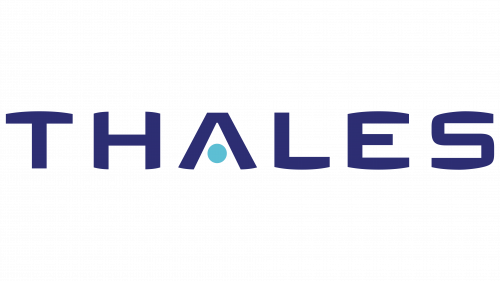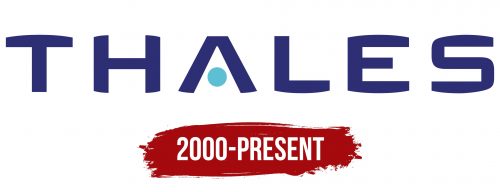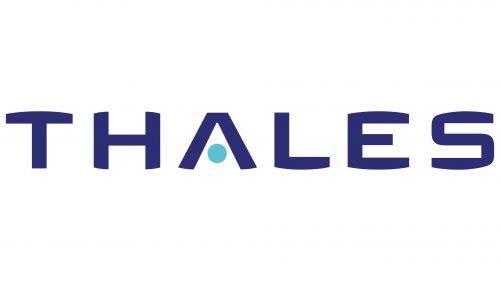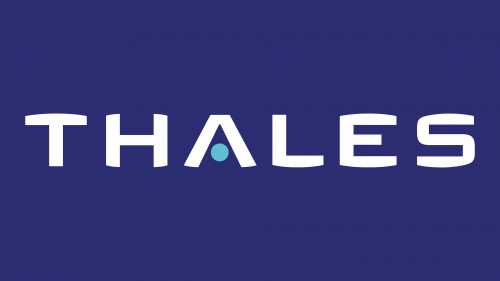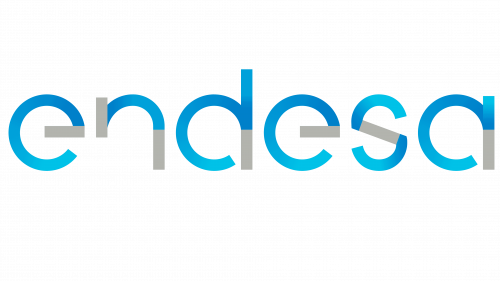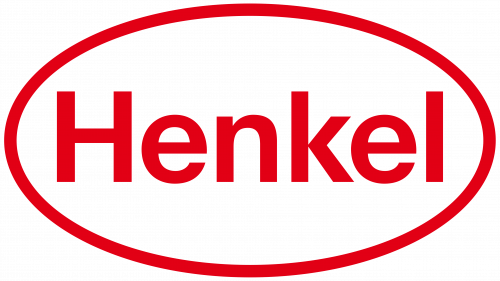The Thales logo is text-based, but it professionally represents the aerospace industry. The simple emblem effectively conveys the heightened precision, meticulousness, and authority of one of the leading producers of radar systems and software for military applications.
Thales: Brand overview
When Thomson-CSF and Alcatel, two French firms, merged in 2000, Thales was born. However, Thales’s origins are far more deeply ingrained in French industrial history.
One of its forerunner businesses, Thomson-CSF, was established in 1893 as Compagnie Française Thomson-Houston (CFTH). It started as an electrical equipment manufacturer. Over the 20th century, the business expanded into electronics and defense technologies.
When the decision to establish Thales was made in 2000, Thomson-CSF was already a major force in the aerospace and defense sectors. The combination of Alcatel’s communications systems and satellite technology divisions created a business with a broad range of high-tech capabilities.
The name “Thales” was selected to honor the Greek mathematician and philosopher Thales of Miletus, signifying the company’s dedication to innovation and science.
Since its establishment, the company has made a concerted effort to grow through partnerships and acquisitions. In 2001, it bought the British company Racal Electronics, greatly strengthening its position in the defense electronics and communications systems sector.
In 2002, the enterprise signed a cooperation agreement with EADS (now Airbus Group) to strengthen its air defense systems sector position.
When the firm acquired the Australian business ADI Limited in 2005, it made a big acquisition that greatly increased its market share in the Asia-Pacific region.
In 2006, the organization sold its consumer electronics branch to concentrate on providing high-tech solutions for the aerospace, defense, and transportation sectors.
The brand closed several major agreements in 2007. The corporation bolstered its position in the naval defense sector by acquiring a 25% share in the French shipbuilding enterprise DCNS (now known as Naval Group). The company retained a share in the joint venture Thales Alenia Space but sold its satellite manufacturing sector to Alcatel-Lucent in the same year.
In 2009, the business expanded its market share in the security systems industry by purchasing the British cryptography solutions business nCipher.
The decade of the 2010s was marked by the firm’s continued growth and diversification. To strengthen its presence in the US market, the company purchased Tampa Microwave, an American producer of portable satellite terminals, in 2011.
By acquiring Alcatel-Lucent’s cybersecurity and data security group in 2014, the organization greatly increased its capabilities in this quickly developing field.
When the enterprise sold its optronics division to Safran in 2016, it focused on other critical business sectors.
The organization revealed in 2017 that it was to acquire Gemalto, the world leader in digital security. After closing in 2019, this transaction became the largest acquisition in the company’s history and greatly improved its standing in cybersecurity and digital identity.
2020 saw the firm finalize its acquisition of Gemalto, a worldwide leader in digital security. The largest acquisition in its history, this deal, valued at 4.8 billion euros, improved the company’s position in digital identity and security. By integrating Gemalto, the organization increased the range of cybersecurity, biometrics, and data protection products.
In 2021, the firm made substantial strides in space technology. Syracuse 4A, the company’s new communications satellite for the French military, was launched successfully. This satellite, which offers more bandwidth and interference protection, is part of a new generation of military communication systems developed and produced by Thales Alenia Space.
In 2022, the brand concentrated on creating big data and artificial intelligence (AI) technologies. The company unveiled several innovative products that leverage AI to boost air traffic control effectiveness and military situational awareness. Furthermore, it increased its market share in the quantum technology sector by funding the creation of quantum communication and sensor systems.
In 2024, the organization solidified its position in the market for smart city security. The company unveiled an integrated platform that combines big data analytics, the Internet of Things (IoT), and artificial intelligence (AI) to control urban infrastructure.
The enterprise strengthened its positions in important business domains and ventured into new markets as it continued to develop and adjust to new technology challenges.
Meaning and History
What is Thales?
It is a French multinational company that designs and develops electrical systems and services for the aerospace, defense, transportation, and security markets. The company offers a range of products and solutions, including avionics, satellite systems, cybersecurity, defense electronics, and railway signaling. It is known for its advanced technologies focused on developing cutting-edge solutions that enhance safety across various mission-critical sectors. The company operates globally, serving clients of governments, institutions, and the private sector.
2000 – today
High-precision technologies can be represented through various styles of visual identity, effectively conveying the company’s character behind them. It’s not always necessary to use technical hints—sometimes focusing on a friendly design for the personal mark is enough. This is the approach taken by the Thales logo. It is a wordmark through which the leading industry corporation expresses itself: its approach to work, worldview, atmosphere, marketing mechanisms, and more.
The strong, strict, and, at the same time, practical emblem consists of the company’s name. It is infused with positive energy that helps the brand stand out through its unique font. The distinctive feature of the font lies in the slightly rounded strokes at the top and bottom, creating a classic “fisheye” effect. This allows the company to convey seriousness through a somewhat playful style.
The curved strokes give the letters a sense of security—they resemble a “safety cushion,” providing protection, an added advantage for the Thales logo. Meanwhile, the opposite parts of the strokes are not rounded but straight, creating contrast and adding powerful dynamism.
Although the emblem is primarily a wordmark, it includes one drawn element—a large blue dot inside the “A.” The circle is integrated into the glyph, replacing the horizontal bar and conveying the concept of the aerospace corporation. Essentially, the blue dot symbolizes our planet, while the sides of the letter, resembling an upward-pointing triangle, protect it. It’s a stylized world within a world. This creates a distinctive style and makes the mark energetic and vivid, emphasizing the company’s field of activity.
The font is uppercase, grotesque, and bold. It adds a fresh meaning to the visual identity and forms a new conceptual image. The text is dark blue, representing the color of the night sky and evoking feelings of trust, security, and reliability. This shade harmonizes perfectly with the light blue, highlighting that the symbol inside the “A” represents a stylized Earth. It is a timeless mark that creates a superior visual identity. The harmonious palette, form, and font balance make it instantly recognizable.
